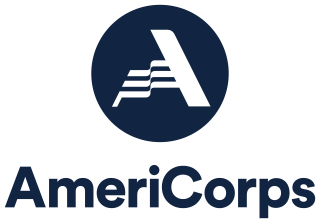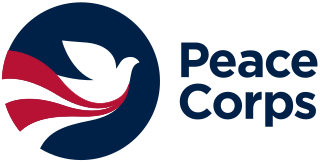
A scholarship is a form of financial aid awarded to students for further education. Generally, scholarships are awarded based on a set of criteria such as academic merit, diversity and inclusion, athletic skill, and financial need, research experience or specific professional experience.
A medical school is a tertiary educational institution, professional school, or forms a part of such an institution, that teaches medicine, and awards a professional degree for physicians. Such medical degrees include the Bachelor of Medicine, Bachelor of Surgery, Master of Medicine, Doctor of Medicine (MD), or Doctor of Osteopathic Medicine (DO). Many medical schools offer additional degrees, such as a Doctor of Philosophy (PhD), master's degree (MSc) or other post-secondary education.

Community service is unpaid work performed by a person or group of people for the benefit and betterment of their community without any form of compensation. It can be distinct from volunteering, since it is not always performed on a voluntary basis and may be compulsory. While individual benefits may be realized, they may be performed for a variety of reasons, including citizenship requirements, alternatives to criminal justice sanctions, school or class requirements, and requisites to obtain certain benefits.
Teach For America (TFA) is a nonprofit organization whose stated mission is to "enlist, develop, and mobilize as many as possible of our nation's most promising future leaders to grow and strengthen the movement for educational equity and excellence."
In the United States, dual enrollment (DE), also called concurrent enrollment, programs allow students to be enrolled in two separate, academically related institutions. Generally, it refers to high school students taking college or university courses. Less commonly, it may refer to any individual who is participating in two related programs.

City Year is an American education nonprofit organization founded in 1988. The organization partners with public schools in 29 high-need communities across the US and through international affiliates in the UK and Johannesburg, South Africa. City Year teams are made up of 18 to 24 year olds, who provide student, classroom, and whole school support, intended to help students stay in school and on track to graduate high school. City Year is a member of the AmeriCorps national service network, and is supported by the Corporation for National and Community Service, school district partnerships, and private philanthropy from corporations, foundations and individuals.

Lisette Nieves is an American academic, non-profit leader, and public official. She is the president of the Fund for the City of New York and a Distinguished Clinical Instructor with New York University. In July 2022, she became a U.S. Senate-confirmed member of the board of directors of AmeriCorps.

AmeriCorps is an independent agency of the United States government that engages more than five million Americans in service through a variety of stipended volunteer work programs in many sectors. These programs include AmeriCorps VISTA, AmeriCorps NCCC, AmeriCorps State and National, AmeriCorps Seniors, the Volunteer Generation Fund, and other national service initiatives. The agency's mission is "to improve lives, strengthen communities, and foster civic engagement through service and volunteering." It was created by the National and Community Service Trust Act of 1993. In September 2020, the agency rebranded itself as AmeriCorps, although its official name is unchanged.

An alternative break is a trip where a group of college students engage in volunteer service, typically for a week. Alternative break trips originated with college students in the early 1980s as a counter to "traditional" spring break trips. These trips are usually led by 2 "site leaders" who are students that have already participated in an alternative break and have gone through extensive leadership training.

Literacy Volunteers of Illinois (LVI) is a 501(c)(3) nonprofit organization that promotes adult literacy throughout Illinois. It serves families, adults, and out-of-school teens.
College Possible is a nonprofit AmeriCorps organization making college admission and success possible for low-income students in the United States through an intensive curriculum of coaching and support. Its model uses recent college graduates serving an AmeriCorps term of service as near-peer mentors for students lacking the social resources to successfully enroll in and graduate from college. Headquartered in Saint Paul, Minnesota, the organization serves students in all 50 states with offices located in the Minneapolis-Saint Paul metro area, Chicago, Milwaukee, Omaha, Portland, Philadelphia and Seattle.

The Edward M. Kennedy Serve America Act or Serve America Act was introduced in the United States House of Representatives on March 9, 2009, by Representative Carolyn McCarthy of New York. Originally titled the Generations Invigorating Volunteerism and Education Act, the bill reauthorizes and expands the AmeriCorps program that was first established in 1993. It passed in the House of Representatives on March 18, 2009. The U.S. Senate debated and approved an amended version of the bill on March 26, 2009, renaming it the Edward M. Kennedy Serve America Act, after Senator Ted Kennedy. The House of Representatives voted on the bill a second time, approving the amended version on March 31, 2009. It was signed by President Barack Obama on April 21, 2009.

AmeriCorps VISTA is a national service program designed to alleviate poverty. President John F. Kennedy originated the idea for VISTA, which was founded as Volunteers in Service to America in 1965, and incorporated into the AmeriCorps network of programs in 1993. VISTA is an acronym for Volunteers in Service to America.

The Peace Corps is an independent agency and program of the United States government that trains and deploys volunteers to provide international development assistance. It was established in March 1961 by an executive order (10924) of President John F. Kennedy and authorized by Congress the following September by the Peace Corps Act.
Citizen Schools is an American nonprofit organization that partners with middle schools across the United States to expand the learning day for children in low-income communities. Its stated mission is "educating children and strengthening communities". Currently, Citizen Schools serves over 5,000 students and recruits over 4,280 volunteers over 31 program sites in 13 cities across 7 states. The center pieces of the Citizen Schools model are its apprenticeship programs run by volunteers that culminate in public demonstrations called WOW!s, and partnering with some middle schools to expand learning time for students. Citizen Schools offers the AmeriCorps National Teaching Fellowship providing a 2-year paid service opportunity for citizens interested in using their personal talents to enhance life opportunities for middle school students. Fellows in their second year can participate in a residency program operated by one of three university partners to obtain teacher certification in California, Massachusetts and New York. In honor of its 20 anniversary in 2015, Citizen Schools honored 20 alumni of the Fellowship who continue to make a profound impact in the community today.
Post-graduate service is a range of commitments that people who have recently graduated with a college degree can make to volunteer in a community in need. Discussed within the setting of colleges and universities, post-graduate service is seen as an alternative to entering the workforce or going to a graduate or professional school.
Nativ College Leadership Program is the gap year program in Israel, run by United Synagogue Youth. It includes an academic component in fall semester, travel, and a community service component in spring semester. It is associated with Conservative Judaism.

Volunteering is a voluntary act of an individual or group freely giving time and labor, often for community service. Many volunteers are specifically trained in the areas they work, such as medicine, education, or emergency rescue. Others serve on an as-needed basis, such as in response to a natural disaster.

Year On, formerly UnCollege, is an organization which aims to equip students with the tools for self-directed learning and career building. Its flagship program is a yearlong gap year program involving training in work skills and life skills, volunteer service in a foreign country, and internship or personal project.
International volunteering is when volunteers contribute their time to work for organisations or causes outside their home countries. International volunteering has a long association with international development or environment, with the aim of bringing benefits to host communities.










